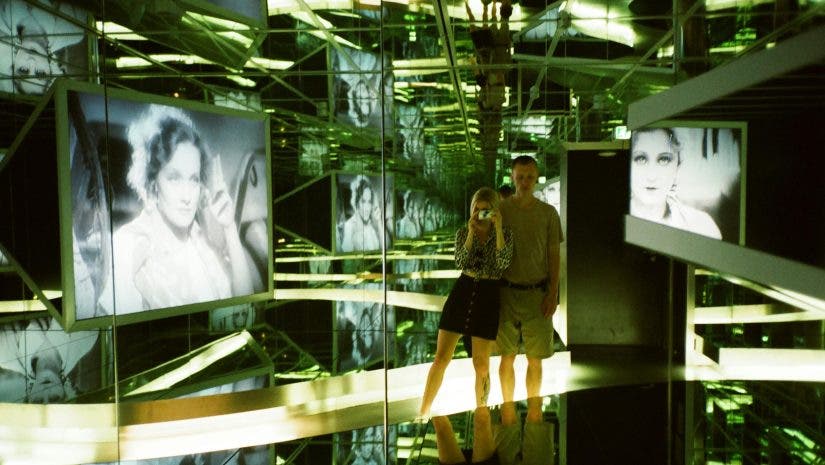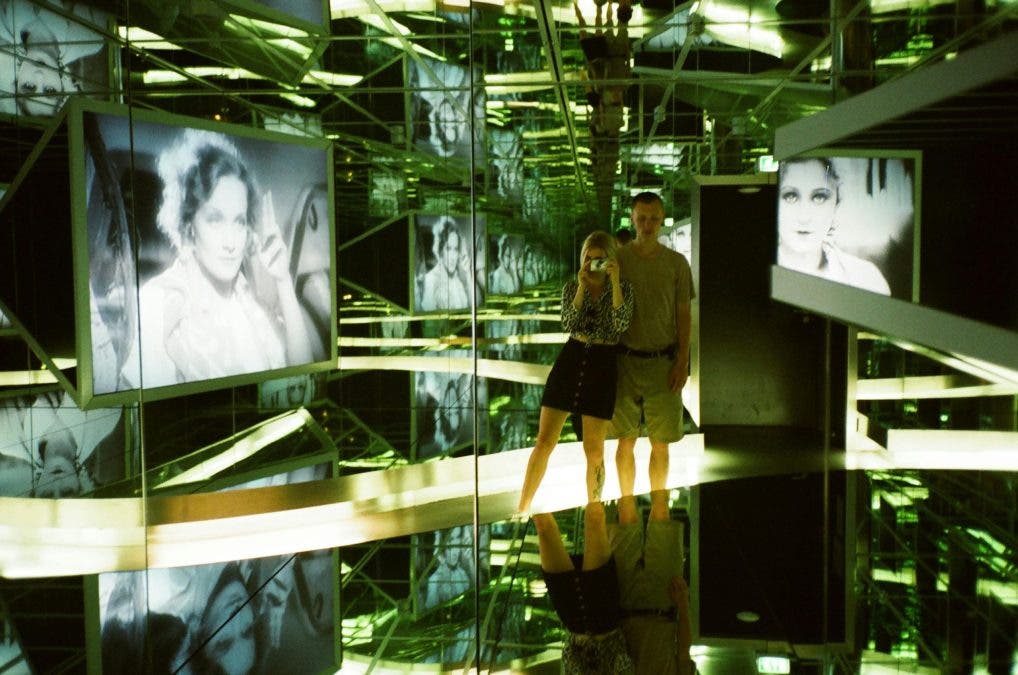In pursuit of capturing an image of genuineness and candid storytelling, interactive photography takes the crown. It is the most efficient way to do so. Its rise to prominence dictates a shift in trendy photography where the audiences, the subject, and the photographer all share a moment.
What is interactive photography?
Interactive photography thrives on connection. It begins when the photographer is known to the subject. The subject becomes aware of the camera and responds to that awareness. This mutual recognition builds a genuine connection between both sides of the lens. That authenticity allows the audience to feel the interaction within the image. Through virtual reality or shifts in focus and exposure, viewers can sense the emotion and depth of that bond.
Traditional vs. Interactive
In contrast to traditional photography that captures a single, static image on film or a sensor, interactive photography introduces a dynamic layer of digital or physical engagement, nudging audiences and viewers to participate and relate, ergo interact, with the photo such as augmented reality (AR) link.
For a more technical comparison, traditional photography captures light and stores it as a chemical reaction on film or as digital data. A one-time capture that encapsulates reality catered to a specific aesthetic. Meanwhile, interactive photography adds layers of digital content through subject-camera interaction. It does so with added sounds, animations, and additional elements that are hidden from a traditional photograph.
Importance of Interactive Photography
Featuring multi-sensory imagery, interactive photography fosters stronger personal connections and deeper storytelling through immersive experiences that the audience can enjoy. It is a powerful tool for education, marketing and creative expression where engagements increase satisfaction. Most commonly seen as AR photos, 360-degree views, and virtual tours — it’s a method of creating more memorable brand interactions.
Moreover, it is that flair of innovation and modernization demanded by the ever-changing human development, a huge step to producing more relatable outputs. It is vital in establishing the imperative of reciprocity between creators and viewers. Unsurprisingly, it gives a competitive edge in a myriad of industries. A niche built on immersive learning, narrative-building, and context-understanding, interactive photography is a key player in the evolution of the industry.
AR and VR, 360
Augmented realities (ARs) and virtual realities (VRs) are technological advancements in the field of immersive technology. These blend the real and digital worlds. The former overlays digital information through enhanced computer-generated graphics onto the real world. Meanwhile, the latter completely immerses the user in a simulated, digital environment over the reality the user is in. Think VR as the whole new world that one can fantasize to be in the AR as the improved reality one is in. Both are technologies designed to better the experience of the user through immersion. AR can enhance the surroundings and can be accessed via smartphones or glasses, allowing users to interact with physically present and digitally-simulated elements in the surroundings whereas VR typically requires a more comprehensive gadget such as a headset to block out the real world and provide the digitally created world to the user.
Rising in the market of today are 360-degree imaging technology, immersing users by fully capturing and displaying contents, elements, and surroundings in a comprehensive view, ensuring users feel “present” in that very setting. To produce such outputs, creators utilize omnidirectional cameras, creating spherical photos or videos. Its prominence to a wider audience spiked as Meta Facebook launched 360 photos in 2016. It provides the audience with a vivid 360-view of a setting, images that urges users to turn their phones around, above and below — a full experience of “being” in the photo.
AI-nteractive Photography?
Interactive photography now boldly embraces artificial intelligence (AI) imagery. AI empowers computers to create digital visuals from diverse sceneries and specific niches. Each image can reflect the unique preferences of its user. This technology transforms photography into a more participatory experience. The user is no longer just a passive recorder of moments. Instead, they become an active collaborator in image creation. AI systems can understand visual input and respond intelligently. They open new, dynamic ways for users to interact with elements within the photo itself.
Industry Effects
The photo industry evolves just as fast as time demands. In this era of technological advancement, professional photography services often cater to specific specialization areas and niches. It is a stark requirement to be able to produce a wide array of variety of events and experiences. With interactive photography slowly weaving into the fabric of the field of photography and embeds itself as a growing photography style, it upends traditional photography by introducing vibrant and vivid interaction between the subject and audience. Additionally, it inserts the viewers into the very image the photographer has taken.
The roles of photographers are constantly evolving as they adapt to new techniques and technologies. This evolution creates opportunities for interactive photography. It aligns with the growing demand for AR and VR content creation. It also supports the development of interactive media experiences. The use of AI in photography does not diminish the art itself. Instead, it enhances creativity and craftsmanship. AI elevates both the quality and the aesthetic depth of photographic work.
In crossing a bridge of contemporary and advanced photography, the traditional method via print/album is superseded by the digital outputs. This is propagated through social media platforms with wireless connectivity and instant sharing capabilities.
Future Trends
As humanity is on its way to adapt and embrace interactive photography, advancements utilizing and exploiting such art is inevitable and is underway. The increased adoption of wireless and self-charging camera technology enables easier access to immersive photos. With that, interactive photography is way more attainable.
Furthermore, this is an avenue to expand mixed-media photography and art with several other digital art forms and experiences. One can think of this as a graceful attempt to widen the spectrum of artforms,
Innovations leading to new applications and user experiences are ongoing! Computer scientists and experts are continuously on the hunt for new discoveries, with follow-ups on enhancements and developments already deployed. All of these aim nothing but to widen the horizon for everyone — photographers and audiences alike.
Are you coming?
To capture an image of genuineness and candid storytelling, interactive photography is changing the industry as it provides the subject and viewer into a shared experience, transcending beyond a split second of visual marvel. It invites the audience to be and not just to see. To foster interaction is to connect on emotion and authenticity. It redefines how stories are told visually, blending candid naturalness with intentional interaction. Then ultimately, it enriches the narrative power of photographs.
Whether you are a photographer planning to venture on interactive photography, or a viewer who wishes to be immersed in a photo in depth and clarity, are you coming?






